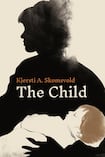
Billed as a portrait of the artist as a young mother, Kjersti A Skomsvold’s The Child delivers a concise, compelling account of the journey from singledom to family life. The “young” is somewhat misplaced – the writer at the centre of the book is in her mid-30s by the time she settles down. A beloved great-aunt even admits to the narrator’s partner that she’d given up hope of the prospect. It is one of many engaging scenes that manages to impart a wealth of feeling with a few carefully chosen strokes.
The vignette style of The Child, which is narrated to the central character's new baby girl, recalls the writing of authors such as Maggie Nelson, Sheila Heti and Jenny Offill, all of whom write brilliantly on the subject of modern motherhood, its delights and demands. While Skomsvold explores what Jenny Offill terms the "art monster" – where a child takes up the time and energy that might otherwise be spent creatively – she is more interested in highlighting the joy of parenting and the small, everyday pleasures that can be found in family life.
All this is done without cliche. Her style is precise and careful, page after page of well-judged, unusual phrases that remain in the mind. At times she writes with a lyrical dreaminess, or more interestingly, the occasional nightmarish hallucination as the narrator grapples with the flipside of love and intimacy, the horror that these things could one day vanish in an instant.
Startling phrases abound – “Whoever wants to be born must destroy a world” – giving a captivating and timeless quality to the voice: “The years you can’t remember as a child, your parents can’t remember either; why does nature do that, make those early years such a secret? The child is a secret to others, the child is a secret to itself.” The book has a quiet humour, at times barely detectable, that adds further depth to the insights and observations: “I’d read that the truth lies in the first urine of the day, that it collects during the night and reveals itself when morning comes.”
This charming toddler
At all times, the narrator is alert to the world around her. What makes the book so interesting is that she see things not only from the perspective of a new mother, “I zigzagged through the cemetery, looking for names for the child. Names on headstones are more alive than names in books or names on doorbells,” but also through the eyes of her children. To her little girl she says, “I put you face down on the changing table, and there you become a little chick pecking at seeds, your head wobbling up and down, searching for food.” Observing her toddler son, she notes, “When men go past, [he] says, All right, mate? and if a nice girl catches his eye he pats the seat beside him in his pushchair and says, Sit down?”
Annesdatter Skomsvold, who hails from Norway, made her English-language debut with The Faster I Walk, The Smaller I Am, published by Dalkey Press. The book won the Vesaas First Book Award, was shortlisted for the Impac Prize and has been sold to publishers in more than 25 countries. She is also the author of four acclaimed novels, a book of poetry and a children's book. Although the geographical backdrop in The Child is different, her work bears comparison to the incisive and thoughtful writing of contemporary Irish authors such as Sinéad Gleeson, Doireann Ní Ghríofa and Elske Rahill.
For such a short book, an amount gets covered. The stresses and surprises of motherhood, the exhausting but exhilarating pursuit of art, the grip of the past on the present, the importance and dangers of mentor figures, the non-linear trajectory of relationships and love: “I hope you can see the romance in this. That I took him from someone else. That he left his partner for me.”
Depressive moments
Skomsvold writes with empathetic clarity on the sensibility of the artist. The heightened sensitivities that produce great work have a downside, which comes through in the narrator’s own depressions and also the melancholy of her artist partner, Bo. Everyday existence – “To become someone’s partner is the most complicated and the most banal thing a person can do” – can become unbearable in the down times, but the narrator has the ability to step back from the problems, to wait out the storm.
The Child is a book that talks back to other books, including works by Herman Hesse, Jeanette Winterson and TS Eliot, among others. But it is a quote from Céline’s Song of the Swiss Guards that best sums up the essence of the novel, the desire to always keep working to turn darkness into light: “Our life is a journey, through winter and night, we look for our way, in a sky without light.”













